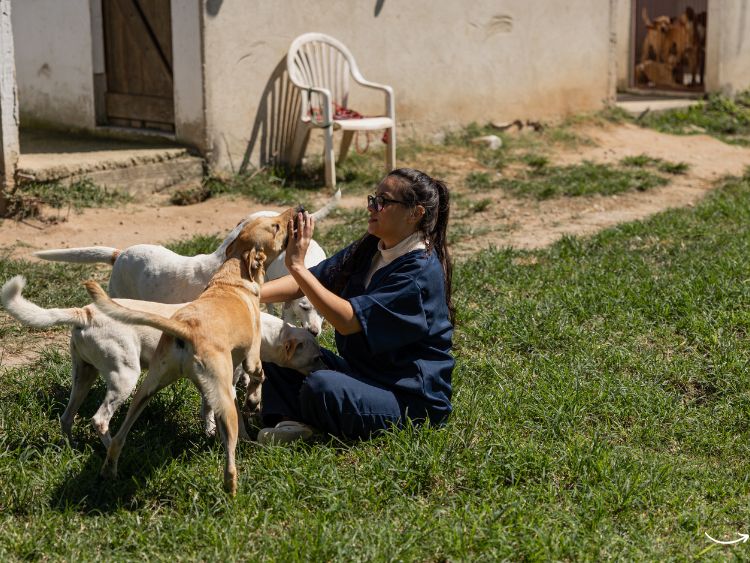Animal farming has been a cornerstone of human civilization for thousands of years. From small family farms to large-scale operations, the relationship between humans and animals in agriculture has evolved significantly. In this article, we’ll explore the fascinating world of animal farming, its history, current practices, and the impact on both animals and the environment. So, buckle up as we dive into the depths of modern animal farm dynamics!
Animal Farm Practices
Animal farming, often referred to as livestock farming, involves raising animals for various purposes, including food, fiber, labor, and companionship. Over time, as human societies grew more complex, so did the need for efficient farming practices. Today, animal farming is a sophisticated industry that balances productivity with animal welfare and environmental concerns.
From humble beginnings to a global industry, animal farming has seen tremendous changes. But, how has this evolution shaped the way we view animal welfare, sustainable practices, and agricultural productivity? Let’s explore the key aspects of modern animal farming and how it’s influencing the world today.
The History of Animal Farming
Animal farming dates back to the Neolithic Revolution, around 10,000 BC, when humans first began domesticating animals for food and labor. Early farmers domesticated species such as cattle, sheep, goats, and chickens, which led to the development of settled communities. The close relationship between humans and animals allowed early civilizations to thrive by providing consistent sources of food, clothing, and even manure for fertilization.
With the Industrial Revolution came mechanization, which drastically changed farming practices. Animal farm operations grew larger and more efficient, increasing productivity but also raising concerns about animal welfare and environmental impact. The development of intensive farming techniques, such as factory farming, led to ethical debates about the treatment of animals and the sustainability of these practices.
Types of Animal Farms
There are several types of animal farms, each specializing in different livestock for various products. Let’s take a closer look at the most common types:
1. Dairy Farms
Dairy farms focus on the production of milk and dairy products such as cheese, butter, and yogurt. Cows are the primary livestock on dairy farms, though goats and sheep are also used in some regions.
2. Poultry Farms
Poultry farms raise chickens, ducks, turkeys, and other birds primarily for their meat and eggs. Modern poultry farms often rely on automated systems for feeding, cleaning, and egg collection.
3. Cattle Ranches
Cattle ranches focus on raising beef cattle for meat production. These farms can range from small-scale operations with just a few animals to massive feedlots housing thousands of cattle.
4. Pig Farms
Pig farms, also known as piggeries, are dedicated to raising pigs for pork. Pigs are one of the most versatile livestock animals, providing various cuts of meat such as bacon, ham, and pork chops.
5. Sheep Farms
Sheep are raised for both their wool and meat. Sheep farms can be found in regions with large open spaces, as sheep are typically grazers and require a lot of land to roam.
Sustainable Practices in Modern Animal Farming
In recent years, the focus on sustainability has transformed many animal farm operations. Farmers are now more aware of the environmental impact of their practices and are taking steps to reduce their carbon footprint, improve animal welfare, and adopt more eco-friendly methods.
1. Grass-Fed and Free-Range Systems
One major shift in animal farming is the transition to grass-fed and free-range systems. These methods allow animals to graze on natural pastures, reducing the need for synthetic feeds and lowering the environmental impact of farming. Grass-fed systems are particularly common in cattle and sheep farming, where animals are allowed to roam freely and feed on natural grasses.
2. Organic Farming
Organic animal farms emphasize the use of organic feed, avoidance of antibiotics and synthetic hormones, and a focus on animal welfare. Organic farming has gained popularity as consumers become more interested in healthier, more natural products.
3. Waste Management and Recycling
Modern animal farms are adopting waste management systems that recycle manure and other organic waste. This not only reduces pollution but also provides a valuable source of fertilizer for crops, creating a more sustainable farming ecosystem.
4. Technological Advancements
Technology plays a significant role in improving animal farm sustainability. From automated feeding systems to precision agriculture techniques that monitor soil health and water usage, technology helps farmers reduce waste and improve efficiency.
Animal Welfare: A Growing Concern
Animal welfare has become a hot topic in the world of animal farming. As consumers grow more conscious of the conditions in which their food is produced, farms are under increasing pressure to adopt humane practices.
1. Ethical Farming
Ethical farming practices aim to provide animals with a better quality of life. This includes ensuring animals have adequate space to move, access to fresh food and water, and opportunities for natural behaviors such as grazing and socializing.
2. Certifications and Standards
Many farms now seek certification from animal welfare organizations to demonstrate their commitment to humane treatment. Certifications such as Certified Humane and Animal Welfare Approved help consumers make informed choices about the products they purchase.
The Future of Animal Farming
As we look to the future, it’s clear that the animal farm industry will continue to evolve. Advances in technology, shifts in consumer preferences, and the growing focus on sustainability will shape the future of animal farming.
1. Precision Farming
Precision farming techniques use data and technology to monitor and optimize every aspect of animal farming. From tracking animal health to analyzing environmental conditions, precision farming is set to revolutionize the industry.
2. Lab-Grown Meat
One of the most exciting developments in the world of food production is lab-grown meat, also known as cultured meat. While still in its early stages, lab-grown meat could reduce the environmental impact of traditional animal farming and provide an ethical alternative to conventional meat production.
3. Climate-Resilient Farming
With climate change becoming an increasingly pressing issue, animal farmers are exploring ways to make their operations more resilient. This includes breeding animals that are better suited to changing weather patterns and implementing water conservation techniques.
FAQs About Animal Farming
Q: What is the difference between free-range and factory farming? A: Free-range farming allows animals to roam and graze naturally, whereas factory farming often confines animals to small spaces for maximum efficiency.
Q: Is organic farming better for the environment? A: Organic farming typically has a lower environmental impact because it avoids synthetic chemicals and emphasizes natural processes, but it can also require more land and resources.
Q: How does animal farming contribute to climate change? A: Animal farming, particularly cattle ranching, produces methane—a potent greenhouse gas. Sustainable practices and technology can help reduce the industry’s carbon footprint.
Q: What are the benefits of grass-fed livestock? A: Grass-fed livestock tend to have healthier diets, which can result in better-quality meat. Grass-fed systems are also more environmentally friendly than grain-fed operations.
Q: Can animal farming be ethical? A: Yes, many farms are adopting ethical practices that focus on animal welfare, such as providing animals with more space, access to natural environments, and better treatment overall.
Conclusion
The world of animal farming is vast and complex, with many factors influencing how farms operate today. As we move toward a more sustainable future, animal farms will need to balance productivity with environmental responsibility and animal welfare. The good news is that advancements in technology and farming techniques are paving the way for a more ethical, efficient, and sustainable future in animal agriculture.
Authoritative Links:





